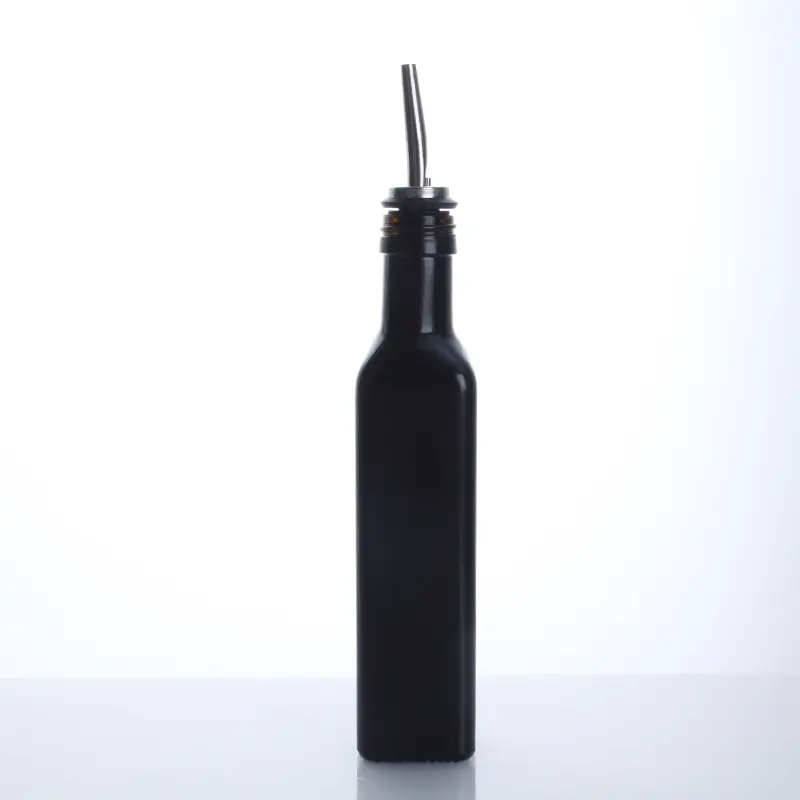WHAT ARE YOU LOOKING FOR?

As a manufacturer specializing in wholesale olive oil packaging, understanding the pros and cons of glass and plastic bottles is critical for your clients’ success. This guide dives deep into material selection, addressing cost, sustainability, consumer appeal, and practical considerations to help wholesale buyers make informed decisions.

The Role of Packaging: Olive oil is sensitive to light, heat, and oxygen. Packaging material directly impacts product shelf life, quality, and brand positioning.
Key Factors for Wholesale Buyers: Cost efficiency, durability, sustainability, and alignment with brand values.
Advantages:
Quality Preservation: Glass is impermeable, protecting olive oil from UV light and oxidation.
Luxury Perception: Associated with premium, artisanal, or organic brands (e.g., high-end EVOO brands).
Sustainability: Infinitely recyclable and reusable, appealing to eco-conscious consumers.
Customization: Offers sleek shapes, embossed logos, and colored glass (e.g., amber or green for UV protection).
Challenges:
Cost: Higher production and shipping expenses due to weight and fragility.
Fragility: Risk of breakage during transit, requiring protective packaging.
Carbon Footprint: Heavyweight glass may increase transportation emissions.
Ideal For: Gourmet brands, organic producers, or businesses targeting eco-aware, high-end markets.
Advantages:
Cost-Effective: Lower production and shipping costs (lightweight, durable).
Durability: Shatterproof, ideal for travel-sized bottles or budget-friendly lines.
Design Flexibility: Available in squeezable designs (PET) or opaque options (HDPE) to block light.
Logistics Efficiency: Lighter weight reduces freight costs and carbon footprint per unit.
Challenges:
Permeability Risk: Some plastics may allow oxygen absorption over time, affecting oil quality.
Environmental Concerns: Single-use plastics face backlash; requires recycled or biodegradable alternatives.
Perceived Quality: May be viewed as less premium than glass.
Ideal For: Bulk sales, budget brands, or businesses prioritizing convenience (e.g., restaurants, sample kits).
Ask these questions:
Brand Identity: Is your client positioning as luxury (glass) or affordable (plastic)?
Sustainability Goals: Do they prioritize recyclability (glass) or lightweight efficiency (recycled plastic)?
Logistics: Will they ship internationally (plastic’s durability) or sell locally (glass’s premium appeal)?
Budget: Can they absorb higher upfront costs (glass) or prioritize volume discounts (plastic)?
Decision-Making Checklist:
Compare MOQ pricing for both materials.
Evaluate shelf-life requirements (e.g., UV exposure in stores).
Survey target audience preferences (e.g., eco-conscious vs. convenience-driven).
Glass Solutions:
Use recycled glass (cullet) to reduce energy consumption.
Offer reusable bottles with deposit-return programs.
Plastic Innovations:
Biodegradable PLA (corn-based) or rPET (recycled) options.
Highlight certifications like Ocean Bound Plastic or B Corp alignment.
Tip: Educate clients on lifecycle analysis—glass may have higher transport emissions but better recyclability.
Glass Dominates Premium Markets: 72% of consumers associate glass with quality (source: Food Packaging Forum).
Plastic’s Niche: Growing demand for lightweight, portable bottles in travel and foodservice sectors.
Hybrid Options: Consider glass bottles with plastic dispensers for functionality.
Glass: Higher per-unit cost but longer shelf life reduces waste.
Plastic: Lower upfront cost but potential for higher environmental fees (e.g., plastic taxes in the EU).
Volume Discounts: Highlight bulk pricing for both materials to incentivize larger orders.
Glass: FDA-approved, inert, and non-reactive.
Plastic: Must use food-grade PET/HDPE and avoid BPA.
Global Standards: Ensure compliance with EU’s REACH or California’s Prop 65 for wholesale clients.
As a trusted small olive oil bottles wholesale supplier, we help clients weigh trade-offs and optimize packaging for their unique needs. Whether glass for luxury appeal or plastic for practicality, the right choice balances cost, sustainability, and consumer trust.